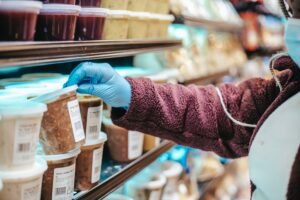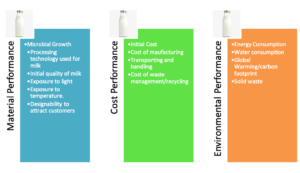
Pic credit: Pexels_Laura James
Packaging has had an evolutionary change of roles over the industrial era. From simply carrying, containing or covering a product, it is now a marketing tool that is directly used for communicating the product’s identity.
However, after improving the visual appearance and making a statement to its host product, packaging conveniently retires in a waste stream, destined to get sorted in a recycling facility or heading to a graveyard – a landfill.
There are no better reasons to reconsider why we need to rethink the design and package of products other than looking at its environmental impact.
- In the US, 28.1% of total generation of municipal waste contains packaging material which accounted for 82.2 million tons in 2018.
- In the European Union, the average packaging waste per inhabitant is 174.1kg in 2018.
- 40% of the plastic waste produced is packaging discarded after single use.
- From these discarded single-use plastics, only 14% of plastic packaging is being collected for recycling while 5% of it being successfully recycled into new products.
Why is packaging important?
In a competitive marketplace, packaging plays the crucial role of making a first impression of the product it contains. In a consumer market, not only should it stand out to attract the consumer, but it should also provide a satisfying product experience that creates a lasting impact. The choice of packaging is therefore a critical decision, due to the role it plays in the buying process as well as in consumer satisfaction, retention and creating brand loyalty.
What are some of the key considerations that go in to packaging product choices?
Let us look at a non-exhaustive list of things that we consider in choosing a packaging product/material.
- Functionality
What is the function that the packaging fulfils and how well does it perform that? For example, a milk carton is expected to contain the milk, preserve it for safe consumption as a food product before and after opening the package, and enable opening/closing to consume and store.
- Appearance or the aesthetic appeal
As packaging has a direct influence on the consumer’s buying decision, it should ideally stand out or attract the consumer. In some instances, it is used to make a brand statement – for example, the packaging of a premium-priced item is designed to communicate its differentiation, inspiring its good first impression and acting as a trailer for what is inside.
- Cost
Packaging is another sub-product associated with a product and we can classify it into product, component and material constituents. Each element has a cost attached to it for design, production, and distribution as well as for customization.
- Environmental aspects
Although this element is not given due consideration in the commercial world, considering how much resources are converted from raw material to waste by simply having it as the package of a product, the aspect of the environment becomes a crucial factor that cannot be ignored.
What is packaging and what does it contain?
It is important to note that the packaging of a product is not only what we see and get as consumers – there is much more to it when we consider the value chain that delivers us the product.
For the most part, there are main layers of packaging involved in a product. We call them primary, secondary and tertiary packaging.
Primary packaging is the packaging that encounters the product. This will be the package that the consumers receive with their product.
Secondary packaging is where multiple units of primary packaging are packed, such as a corrugated cardboard box.
The next level, tertiary packaging is when a number of secondary packaging are stored together, such as a stretch-wrapped palate. Both, secondary and tertiary packaging act as safe houses along the supply chain for the product and the primary packaging.
Choice of packaging – What do we need to consider?
Let us unpack what we need to consider when we choose a product packaging.
Take for example how milk packaging adds benefits to the product.

Pic credit: Pexels_meruyert gonollu
The shelf life of milk is extended using a combination of processing and packaging. Milk usually has a very short shelf life (3 to 5 hours) and today we have been able to extend it to three months to one year. If we consider bottled fluid milk, its shelf life depends on the quality of the milk, processing condition, microbial growth, packaging material, exposure to light and temperature.
What should we consider?
When selecting a packaging material for fluid milk, the following are some aspects that need to be considered, and which form the criteria for packaging material selection.

When it comes to alternatives for milk packaging, there is an array of choices as packaging material: glass bottle, paperboard laminated cartoons and PET bottles, coextruded high density polyethylene bottles, etc.
In selecting the most suitable packaging from a pool of alternatives, a structural analytical method could be adopted when reaching a decision. That is where multi-criteria decision analysis methods come in to the picture. A conscious choice regarding packaging can be made based on what is important for each specific product, the criteria required and what is important to the decision maker.
Organizations could ensure that a 360 degree scan is carried out to capture all essential elements by following a proper methodical analysis in choosing a packaging material. Above all, apart from the fact that environmental and cost factors become more visible with factual data put on the table, the choices can be made to align with strategy and competitive positioning of a product.
More on applying multi-criteria decision analysis to choose packaging material in upcoming articles.
Some peer-reviewed papers that have discussed similar case studies